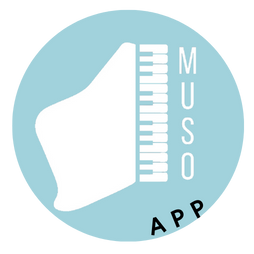
Absolutely, you can teach yourself to read music! Just like learning to read a book or riding a bike, it might seem tricky at first, but with a little practice, you'll get the hang of it. Think of it as learning a new language— except a musical one and any adult can learn!
What Is Music Reading?
When we talk about music reading, it means we can play based on what we can read on the music score. Music symbols can tell you what notes to play, how long to hold them, and how fast or slow to go. It’s even easier than a language because you only need to learn ABCDEFG (or musical order, CDEFGABC).
Here are 5 music fundamentals in summary, but as a beginner, focus on the first two points:
1) Notes - circles on different lines resemble specific “letters” or “sounds” which you play on the corresponding instrument.
For now, the main notes you need to remember is Treble Clef: CDEFGABC (unless you are learning an alto or bass instrument)
*1.5) Fingering - the type of finger(s) you need to play on the key, hold notes or press on the strings.
*usually notes & fingering are paired together
2) Rhythm - the type of beat! You probably may be familiar with this “beat” from dancing or even simple singing.
The 4 main ones are: crotchet/quarter note, minim/half note, dotted minim/dotted half, semibreve/whole note.
3) Articulation - how to play the note.
The 3 main ones you need to remember are: staccato (play short and detached), legato (connect the notes without a break) and slurs (lift the sound gently end of a connected passage).
4) Dynamics - how loud or soft you play the note.
The 2 basic dynamics are: forte (f) (loud) and piano (p) (soft).

5) Musicality (Phrasing) - this is usually the last addition. Once you are confident with the first 4 fundamentals above (usually at least 1 year later), you can then focus on bringing out the emotions in the way you play or sing!
But don’t worry about this for now. This step is something to worry only after 1 year. Focus on points 1 and 2 first, otherwise you will overwhelm yourself!
Where to Start?
First, please use Muso Method way and get our Muso Flash Cards. Whether you use British version or American with Solfège, our Muso Method way is learning by looking at the lines. Each Muso Flash Card set access a free note reading course called Muso2Six challenge: Learn 2 octaves in 6 weeks on musomethod.app.

Why? What does looking at the lines mean? What’s different? Often, many learners (including adults) use the music teaching method by note reading with acronyms.
This is actually a VERY difficult way to learn, and why for a long time, classical musicians were associated with “intelligence” or the concept of “only focused, intelligent people can play music”.
But actually, it’s just the “intelligent people” who knew not to follow this rule and can recognise the note in relation to the lines subconsciously.
Can you imagine people reading the score and having to cite the poem “Every Good Boy Deserves Fruit”? Or a 4yo kid? They probably can’t speak yet!
Sometimes it’s the tool, not the method
Muso Method Pedagogy is revolutionalising the ease of note reading. No more silly acronyms or associating unnecessary pictures. Let’s make note reading straight forward and easy to learn!
How? What’s the plan?
If you are learning piano keys, we recommend to start with 2 octaves of notes (access our free Muso2Six note reading course here).
Treble Clef
Week 1 - Middle CDE
Week 2 - F&G
Week 3 - ABC
Bass Clef
Week 4 - BA
Week 5 - GF
Week 6 - EDC
What’s the first step?
Learn Treble clef and bass clef first. Treble Clef is usually our right hand and bass clef is left hand.
Then with our Middle C flash card, flip it over and notice the lines. Let’s count them up together.
This is called the music staff—the five lines where the notes live.
Note reading with the score
Now use your Muso Flash Cards and match each note on the score with the corresponding card!
Step 1: Read the notes out loud (match the flash card) and write the “counts” in.
Step 2: Repeat without matching the flash cards. Try “sing” the notes out loud with the right rhythm too. We recommend 5 times rule to be confident!
Step 3: Read the notes out loud and play at the same time.
Step 4: Now
Practice Makes Perfect: Just like with anything new, practice is key. Start with simple songs or even just a few notes at a time. The more you practice, the easier it will become.
Can You Do It Alone?
Yes, you can! There are plenty of tools and resources out there to help you learn on your own. You can find videos, apps, and even books that teach you step-by-step. The great thing about teaching yourself is that you can go at your own pace. If something feels tricky, you can take your time with it until you feel comfortable.
But if you are serious about classical music specifically, It’s More Fun with Muso Method App and Muso Method resources!
Our straightforward Muso Method Beginner books are coming source, and we will also be releasing Muso Method Scale Dictionary amongst other grade, technical and curriculum books.
Even though you can learn on your own, sometimes it's more fun to have a little help. Whether you're using other beginner books or learning pop songs, our Muso Method Flash Cards will definitely help with note reading. Try learn 2 octaves in 6 weeks or get fluent and confident with 4 octaves in 12 weeks to 6 months!
Let’s make music notes a game you can play anytime, anywhere - even by the pool 🤣

Kindest

